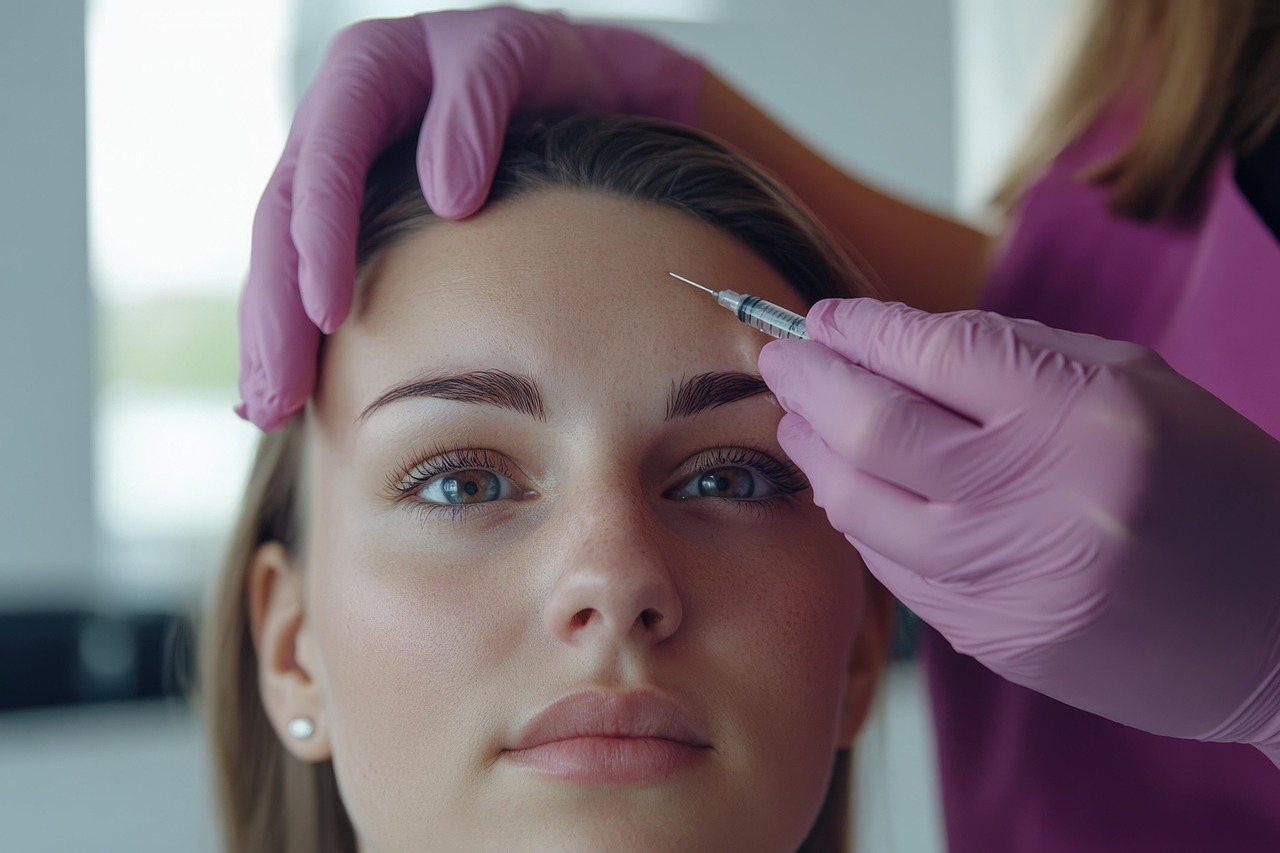Botox: A Practical Solution for Dynamic Wrinkles
Botox treatment has become increasingly popular as a non-invasive solution for reducing the appearance of dynamic wrinkles. This cosmetic procedure, which involves injecting botulinum toxin into specific facial muscles, temporarily paralyzes them, smoothing out wrinkles and fine lines. As more people seek ways to maintain a youthful appearance, Botox has emerged as a practical option for those looking to address signs of aging without resorting to surgery.

What is Botox and how does it work?
Botox, short for botulinum toxin, is a neurotoxin produced by the bacterium Clostridium botulinum. When used in controlled, small doses, it can effectively reduce muscle activity in targeted areas. For cosmetic purposes, Botox is injected into specific facial muscles responsible for creating dynamic wrinkles, such as frown lines, crow’s feet, and forehead lines. By temporarily paralyzing these muscles, Botox prevents them from contracting, which in turn smooths out existing wrinkles and prevents new ones from forming.
What are the most common areas treated with Botox?
While Botox can be used in various areas of the face, some regions are more commonly treated than others. The most popular treatment areas include:
-
Forehead lines: Horizontal wrinkles that appear when raising eyebrows
-
Frown lines (glabellar lines): Vertical lines between the eyebrows
-
Crow’s feet: Fine lines around the outer corners of the eyes
-
Bunny lines: Wrinkles on the sides of the nose
-
Lip lines: Vertical lines above the upper lip
These areas are prone to dynamic wrinkles, which form due to repetitive muscle movements over time. Botox injections in these regions can effectively soften and reduce the appearance of these lines.
What can I expect during a Botox treatment session?
A typical Botox treatment session is relatively quick and straightforward. The procedure usually takes about 10 to 15 minutes, depending on the number of areas being treated. Here’s what you can expect:
-
Consultation: Your practitioner will discuss your goals and assess your facial structure.
-
Preparation: The treatment area will be cleansed, and a topical anesthetic may be applied if desired.
-
Injection: Using a fine needle, the practitioner will inject small amounts of Botox into the targeted muscles.
-
Post-treatment care: You’ll receive instructions on aftercare, including avoiding touching the treated area and refraining from strenuous activities for a few hours.
Most patients report minimal discomfort during the procedure, often describing it as a slight pinching sensation.
What are the potential side effects of Botox injections?
While Botox is generally considered safe when administered by a qualified professional, it’s essential to be aware of potential side effects. Common side effects are usually mild and temporary, including:
-
Bruising or swelling at the injection site
-
Headache
-
Mild pain or discomfort
-
Temporary eyelid drooping (rare)
-
Flu-like symptoms (rare)
More serious side effects are rare but can include allergic reactions, difficulty swallowing, or muscle weakness. It’s crucial to discuss any concerns with your healthcare provider before undergoing treatment.
How long do Botox results last, and how often should treatments be repeated?
Botox results typically become noticeable within 3 to 7 days after treatment, with full effects visible after about two weeks. The duration of results can vary from person to person, but on average, Botox effects last between 3 to 6 months. Factors influencing the longevity of results include:
-
Individual metabolism
-
The area treated
-
The amount of Botox used
-
The strength of the treated muscles
To maintain the effects, most practitioners recommend scheduling follow-up treatments every 3 to 4 months. Regular treatments may lead to longer-lasting results over time, as the targeted muscles become weaker and less active.
How much does Botox cost, and what factors influence pricing?
The cost of Botox treatment can vary significantly depending on several factors. Here’s a breakdown of the primary considerations that influence pricing:
-
Geographic location: Prices tend to be higher in metropolitan areas and regions with a higher cost of living.
-
Provider expertise: More experienced practitioners may charge higher fees.
-
Number of units used: Botox is typically priced per unit, with different areas requiring varying amounts.
-
Treatment area: Larger areas or multiple treatment sites may increase the overall cost.
To give you a general idea of Botox pricing, here’s a comparison of average costs for common treatment areas:
| Treatment Area | Average Units Required | Estimated Cost Range |
|---|---|---|
| Forehead Lines | 10-30 units | $100-$450 |
| Frown Lines | 20-30 units | $200-$450 |
| Crow’s Feet | 10-15 units per side | $200-$450 |
| Bunny Lines | 5-10 units | $50-$150 |
| Lip Lines | 4-8 units | $40-$120 |
Prices, rates, or cost estimates mentioned in this article are based on the latest available information but may change over time. Independent research is advised before making financial decisions.
When considering Botox treatment, it’s essential to prioritize the provider’s qualifications and expertise over cost alone. A skilled practitioner can achieve optimal results with fewer units, potentially saving you money in the long run while ensuring a natural-looking outcome.
In conclusion, Botox offers a practical solution for those looking to address dynamic wrinkles and maintain a more youthful appearance. With its minimally invasive nature, quick treatment sessions, and relatively long-lasting results, it’s no wonder that Botox has become one of the most popular cosmetic procedures worldwide. However, as with any medical treatment, it’s crucial to consult with a qualified healthcare professional to determine if Botox is the right choice for your individual needs and goals.
This article is for informational purposes only and should not be considered medical advice. Please consult a qualified healthcare professional for personalized guidance and treatment.




